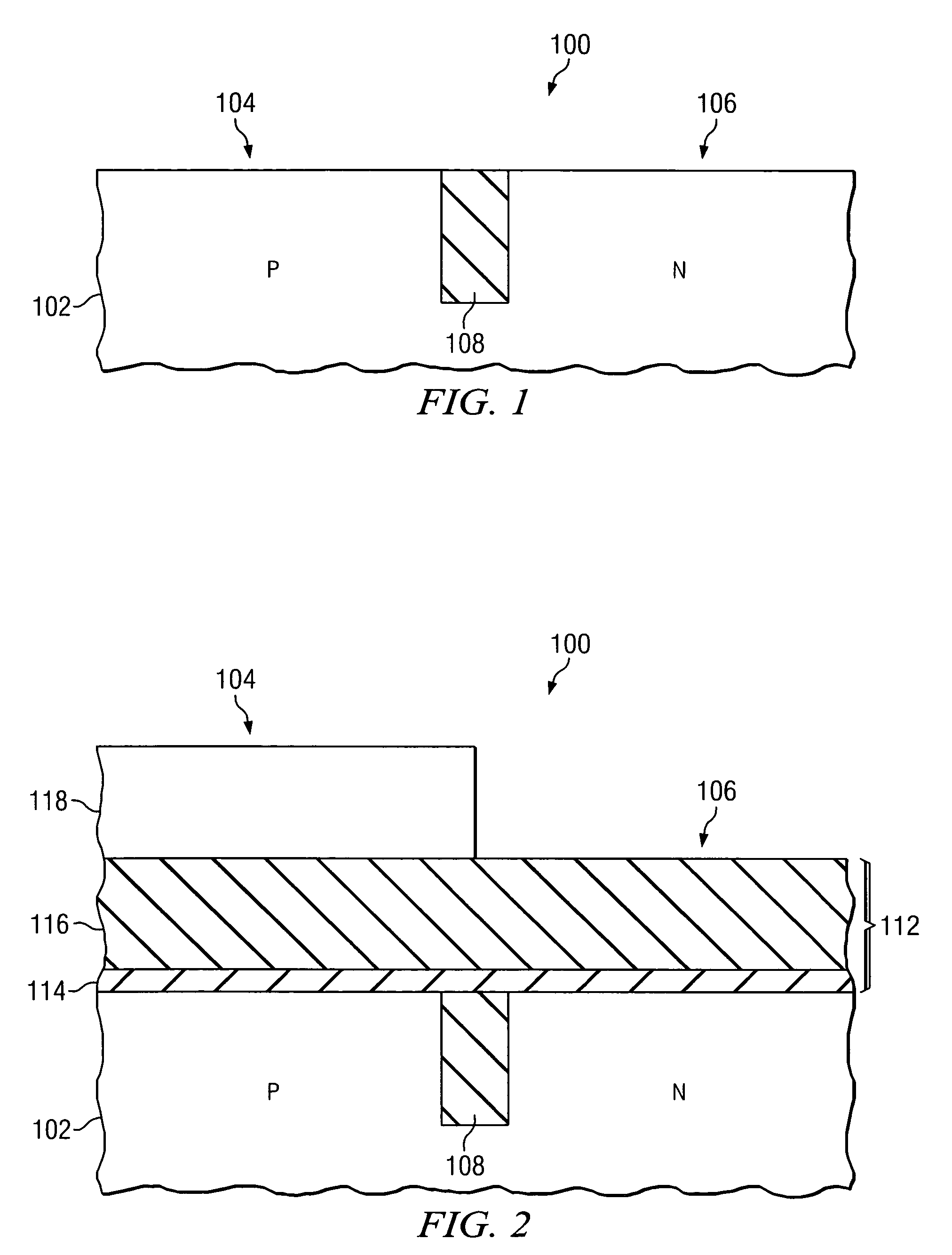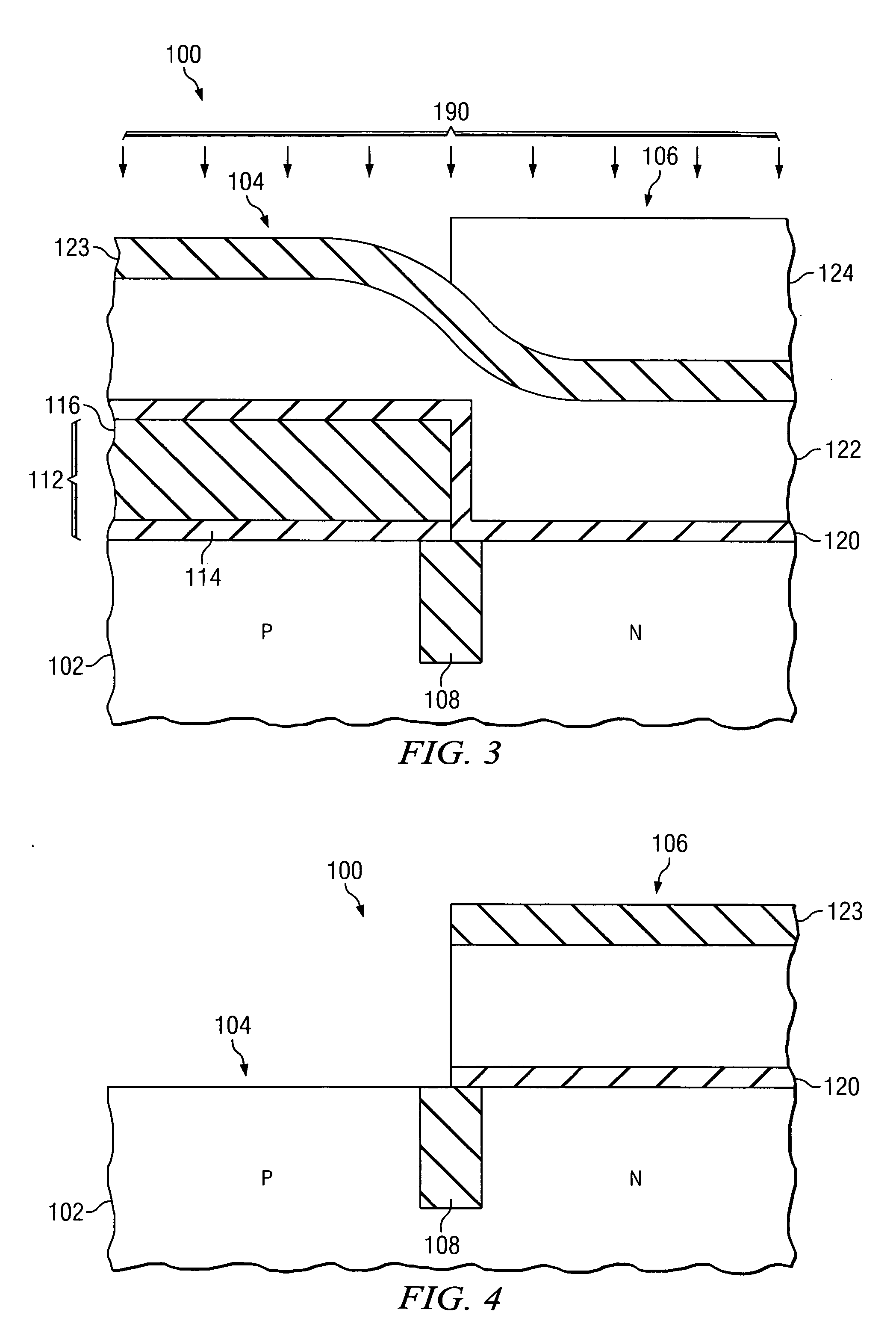Transistor device and method of manufacture thereof
a technology of transistors and dielectric materials, applied in the direction of semiconductor devices, transistors, electrical apparatus, etc., can solve the problems of reducing the speed and performance of transistors having high k gate dielectric materials, reducing the threshold voltage vt, and reducing the mobility of transistors, so as to prevent the effect of polysilicon depletion and boron penetration effects when the device is operated in inversion mod
- Summary
- Abstract
- Description
- Claims
- Application Information
AI Technical Summary
Benefits of technology
Problems solved by technology
Method used
Image
Examples
Embodiment Construction
[0032] The making and using of the presently preferred embodiments are discussed in detail below. It should be appreciated, however, that the present invention provides many applicable inventive concepts that can be embodied in a wide variety of specific contexts. The specific embodiments discussed are merely illustrative of specific ways to make and use the invention, and do not limit the scope of the invention.
[0033] High-k gate dielectrics generally yield orders of magnitude lower gate leakage current than SiO2 gate dielectrics with the same effective oxide thickness (EOT). For low standby power (LSTP) and high performance (HP) applications, the use of a high-k material for a gate dielectric is a potential solution in the roadmap for the advanced technology nodes. Using high-k materials for gate dielectrics in CMOS devices has resulted in good EOT, lower gate leakage (Jg), mobility and hysteresis parameters, but the devices suffer from lack of Vt controllability. In order to mak...
PUM
 Login to View More
Login to View More Abstract
Description
Claims
Application Information
 Login to View More
Login to View More - R&D
- Intellectual Property
- Life Sciences
- Materials
- Tech Scout
- Unparalleled Data Quality
- Higher Quality Content
- 60% Fewer Hallucinations
Browse by: Latest US Patents, China's latest patents, Technical Efficacy Thesaurus, Application Domain, Technology Topic, Popular Technical Reports.
© 2025 PatSnap. All rights reserved.Legal|Privacy policy|Modern Slavery Act Transparency Statement|Sitemap|About US| Contact US: help@patsnap.com



